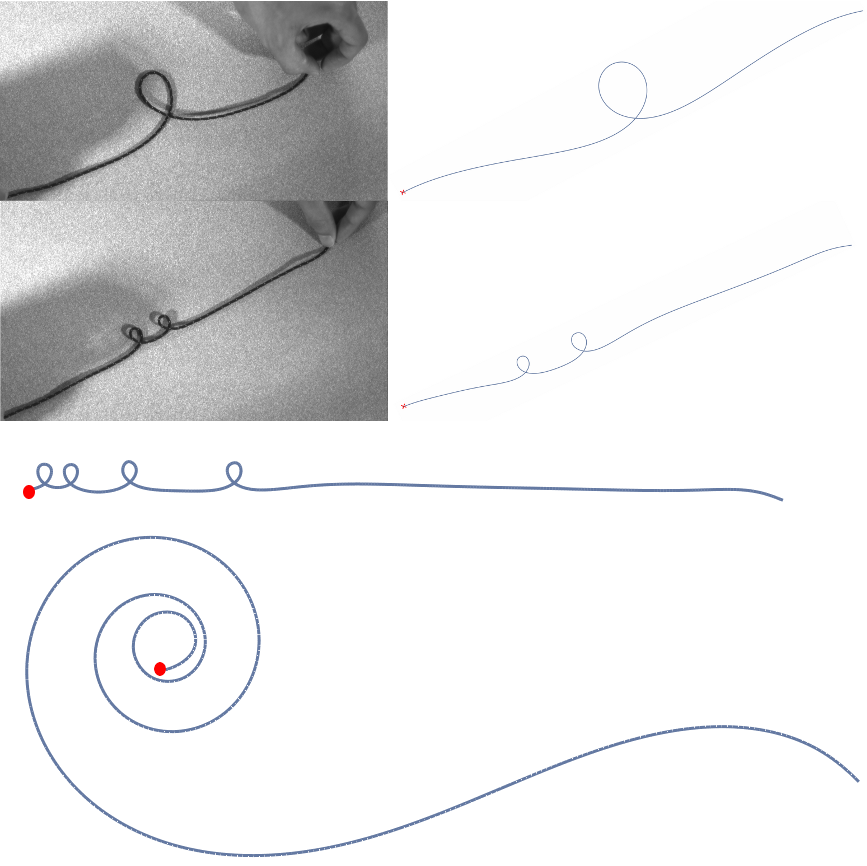Section: New Results
Deformation modeling of slender objects
Participants : Rhaleb Zayer, Alejandro Galindo, Kun Liu.
A desirable property when modeling/editing slender curve-like objects is the ability to emulate the deformation behavior of natural objects (e.g. cables, ropes). Taking such physical considerations into account needs also to abide to editing requirements such as interactivity and full access and control of all degrees of freedom (positional and rotational constraints) during interaction. We regard editing as a static deformation problem but our treatment differs from standard finite element methods in the sense that the interpolation is based on deformation modes rather than the classic shape functions. A careful choice of these modes allows capturing the deformation behavior of the individual curve segments, and devising the underlying mathematical model from simple and tractable physical considerations. In order to correctly handle arbitrary user input (e.g. dragging vertices in a fast and excessive manner), our approach operates in the nonlinear regime. The arising geometric nonlinearities are addressed effectively through the modal representation without requiring complicated fitting strategies. In this way, we circumvent commonly encountered locking and stability issues while conveying a natural sense of flexibility of the shape at hand. Experiments on various editing scenarios including closed and non-smooth curves demonstrate the robustness of the proposed approach. This work has been published this year in the journal "Computers & Graphics", [15] .



